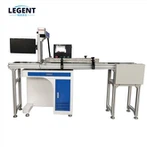Electronic chip molds play a crucial role in the manufacturing process of electronic devices. They are used to create the intricate patterns that form the basis of integrated circuits, which power everything from smartphones to computers. Keeping these molds clean is essential to ensure the quality and consistency of the electronic components being produced.
Current Methods for Cleaning Electronic Chip Molds:
The traditional method for cleaning electronic chip molds involves using chemicals such as acids, solvents, and alkalis. While these chemicals are effective at removing contaminants, they can also be hazardous to the environment and pose safety risks to workers. Additionally, the use of chemicals can degrade the surface of the mold, leading to reduced efficiency and lifespan.
Laser Cleaning Technology:
An alternative approach to cleaning electronic chip molds is by using lasers. Laser cleaning technology works by using a high-powered laser beam to vaporize contaminants on the surface of the mold. This method does not require the use of harsh chemicals, making it environmentally friendly and safer for workers. It is also less damaging to the surface of the mold and can extend its lifespan.
Advantages of Laser Cleaning Technology:
One of the main advantages of using laser cleaning technology is its precision and accuracy. It can target specific areas of the mold without damaging the surrounding material. It also does not produce any waste or by-products, making it a more sustainable solution than chemical cleaning methods. Additionally, laser cleaning can be automated, reducing labor costs and increasing efficiency.
Limitations of Laser Cleaning Technology:
Despite its advantages, laser cleaning technology has some limitations. The initial cost of equipment can be relatively high, making it less accessible to smaller manufacturers. Additionally, laser cleaning can only remove surface-level contaminants and may not be effective on deeper stains or corrosion. There may also be safety concerns, as lasers can pose risks to the eyes and skin if proper safety measures are not taken.
Conclusion:
Laser cleaning technology is a promising alternative to traditional chemical cleaning methods for electronic chip molds. It is a more sustainable and safer solution that can lead to increased efficiency and extended mold lifespan. However, its effectiveness may depend on the depth and type of contaminants present on the surface of the mold. Manufacturers must evaluate their specific needs and constraints to determine whether laser cleaning technology is a practical and effective solution for their electronic chip mold cleaning requirements.









